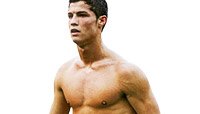
5 Ways To Fuel Up For Sports
Nutrition plays a huge role in athletic performance. No matter your sport, you'll be a lot better once you implement these 5 nutrition tips!
Nutrition is essential for an athlete's performance. Whether you're a beginner or a seasoned vet, your strength, focus, motivation, and endurance can all be improved by good nutrition.
But what, you may be asking, is good nutrition? The standard American diet largely consists of highly-processed, highly-refined, fatty foods that have too many calories and not enough actual nutrients. Being an active individual means you need to forgo this diet and instead consume food that provides high levels of energy and protein.
If you're not sure where to start, here's some help! Each sport may require its own specific nutrition plans. Yet whether you're a gymnast, runner, weightlifter, or football player, these five tips will make you a winner on and off the field.
1
Protect Yourself with Antioxidants
After a tough workout, you're probably sweating, experiencing muscle tenderness, and you may even be shaking slightly. Because you can feel these workout side effects so intensely, you pay attention to them. But have you ever wondered what's happening to your internal systems?
During normal metabolism, oxygen is used for energy production. In the process, the majority of oxygen consumed is attached to hydrogen to form water. However, a small percentage of oxygen is not completely reduced, leading to the production of reactive oxygen species (ROS).1
These little rascals are better known as free radicals.
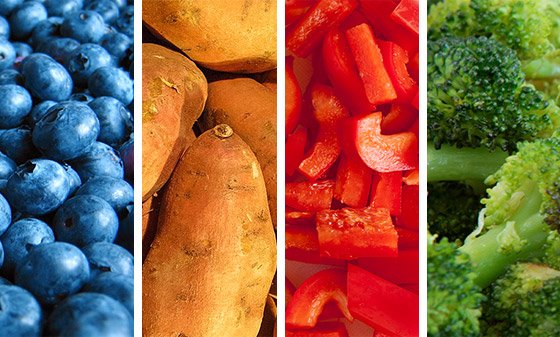
During exercise, skeletal muscle is a major source of free radicals, as well as one of their main targets.2 Exercise increases rates of oxygen use, leading to their increased production/3 The oxidative damage caused by free radicals can increase inflammation within the body, leading to reductions in force production and range of motion while increasing rates of fatigue.
Combat these performance-damaging effects by consuming foods rich in vitamin A, vitamin C, and vitamin E, which contain antioxidant properties.4,5 Furthermore, lower levels of oxidative stress have been reported after beta-carotene and selenium use.6,7 You can get your daily serving of antioxidants in dark leafy greens, as well as a variety of fruits and vegetables. Some of the best choices are blueberries, sweet potatoes, red peppers, tomatoes, and broccoli. Looking for something to sip on? Green tea is chock-full of flavonoids, namely catechins, which are strong antioxidants.8
2
Know Your Carbs
Carbohydrates are your body's preferred energy source during high-intensity, anaerobic exercise. When you're training or playing hard, you want your body to produce and use energy as quickly and efficiently as possible. That's why it's vital that you eat carbohydrates. The primary role of protein is building muscle, bone, skin, and other tissues, so if you rely solely on protein for energy, other systems and tissues will suffer.
Now that you know you need to eat carbs, it's important to also know the distinctions between simple carbs and complex carbs. Simple carbs, like glucose and fructose, are broken down quickly by the body and used for energy. They are found in foods such as fruits, vegetables, and milk. They can also be found in processed and refined sugar products, like candy and soft drinks.
Complex carbohydrates, on the other hand, are long chains of sugar molecules that provide energy at a slower, more sustainable rate. Additionally, complex carbs provide more vitamins, minerals, and fiber. You can get complex carbs from oats, starchy vegetables, pasta, beans, and bread.
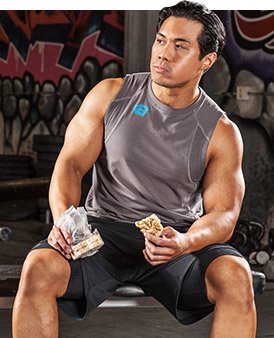
Consuming mostly complex carbs is usually your best option. Not only do they limit fluctuations in blood sugar levels, but they help control appetite due to their higher fiber content.9 Consume complex carbohydrates about 2-3 hours before you begin training to help boost your energy and delay fatigue.
Although it may seem contradictory, simple carbohydrates do have an important place in your performance-enhancing nutrition plan. After you've trained, your muscles will be starving for nutrients. By ingesting simple carbs (specifically glucose) like rice cakes, pineapple, potatoes and fruit juice 10-30 minutes after you train, you'll increase your insulin levels. Insulin helps usher nutrients into your muscles and liver.10
Replacing nutrients soon after you train will help your body restore glycogen and help with recovery. The better your body is at recovering, the more prepared you'll be for your next practice, game, or event!
3
Don't Fear Fat
Healthy fats are essential for athletic performance as well as your overall physical and mental health. Fats give you energy, help your body absorb vitamins and minerals, control inflammation, and keep your skin and hair healthy, just to name a few benefits. The bottom line is that your body needs fat to work properly, so removing it from your diet is unhealthy and can be dangerous.
Our bodies require two essential (must get from food) fatty acids: omega-3 and omega-6. These essential fats help regulate your body's inflammatory response to exercise.11 Most people consume more omega-6 than omega-3, which is normal and healthy. But, a huge imbalance can be damaging.12 Therefore, it's not a bad idea to supplement your diet with a little more omega-3. You can find it in flaxseed, soybean, cod, sardines, salmon, and walnuts.
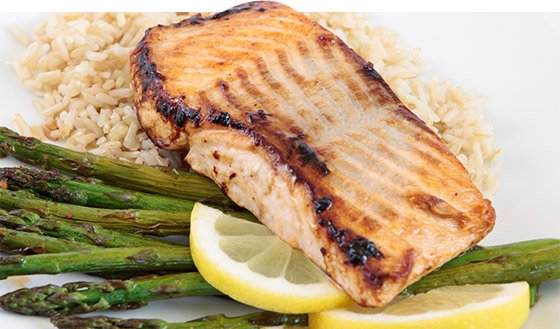
Because omega-3 fatty acids also help support cardiovascular and cognitive health, a supplement may also be a good idea. Although the recommended daily amount is not exactly understood, individuals shouldn't consume more than four or five grams per day because can it create lipid oxidation, creating more harm than good.13
4
Don't Skip Breakfast
When you wake up in the morning, your blood sugar is already low. That means that your body is without much available immediate energy. If you're already running on fumes, how do you expect to perform?
Eating a balanced meal of carbs and protein, like a slice of whole-wheat bread and a couple of eggs, before you work out can help you feel more energized and focused. This may mean that you have to get up a little earlier than you like, but how you feel while you're training will be well worth it.
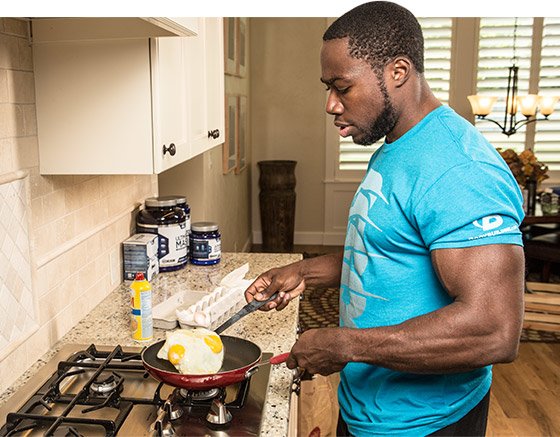
Eating breakfast can also counteract the effects of cortisol, levels of which are highest in the morning.14 Until you provide your body with the nutrients and energy it needs, cortisol levels will remain high. Elevated levels of this hormone are related to the breakdown of muscle, which can have negative effects on athletic performance. Elevated cortisol has also been shown to increase abdominal fat storage, while stimulating appetite.15,16
5
Don't Just Pump Iron—Consume It
Iron is part of hemoglobin, a protein found in blood. Hemoglobin is responsible for transporting oxygen to every cell in your body. Iron is also a critical part of myoglobin, a protein found in muscles that accepts, stores, transports, and releases oxygen. Iron plays an essential role in building a healthy immune system as well as aiding in the release of energy from cells. Although iron has a very important role to play in your body, many athletes are iron-deficient.17 It's especially noticeable in women, vegetarians, and adolescent athletes.
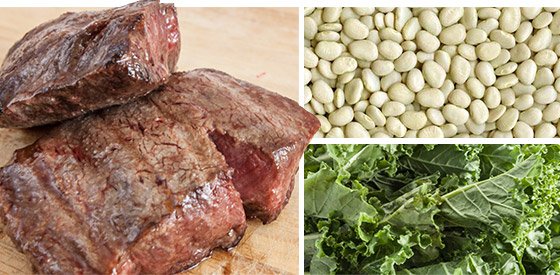
Iron is an essential nutrient, meaning it must come from food. The best sources for iron come from animal proteins, especially red meat. However, you also can obtain it from non-animal sources such as broccoli, lima beans, kale, and even supplements. Although these sources are considered non-heme—meaning iron is not attached to the heme protein—and are not as readily absorbed in the body, consuming with a vitamin C-rich food or drink can increase absorption. The RDA for men is 8 mg per day; for women and vegetarians, up to 18 mg per day. If you're feeling sluggish during your workouts, you may want to increase your intake, as iron can be lost during intense exercise via sweat and damaged red blood cells.18
REFERENCES
- Williams, S. L., Strobel, N. A., Lexis, L. A., & Coombes, J. S. (2006). Antioxidant requirements of endurance athletes: implications for health. Nutrition Reviews, 64(3), 93-108.
- Powers, S. K., & Jackson, M. J. (2008). Exercise-induced oxidative stress: cellular mechanisms and impact on muscle force production. Physiological Reviews, 88(4), 1243-1276.
- Davies, K. J., Quintanilha, A. T., Brooks, G. A., & Packer, L. (1982). Free radicals and tissue damage produced by exercise. Biochemical and Biophysical Research Communications, 107(4), 1198-1205.
- Meydani, M., Evans, W. J., Handelman, G., Biddle, L., Fielding, R. A., Meydani, S. N., ... & Cannon, J. G. (1993). Protective effect of vitamin E on exercise-induced oxidative damage in young and older adults. American Journal of Physiology-Regulatory, Integrative and Comparative Physiology,264(5), R992-R998.
- Alessio, H. M., Goldfarb, A. H., & Cao, G. (1997). Exercise-induced oxidative stress before and after vitamin C supplementation. International Journal of Sport Nutrition, 7(1), 1-9.
- Akil, M., Gurbuz, U., Bicer, M., Sivrikaya, A., Mogulkoc, R., & Baltaci, A. K. (2011). Effect of selenium supplementation on lipid peroxidation, antioxidant enzymes, and lactate levels in rats immediately after acute swimming exercise. Biological Trace Element Research, 142(3), 651-659.
- Sumida S. Doi T, Sakurai M. et al. (1997). Effect of a single bout of exercise and ß-carotene supplementation on the urinary excretion of 8-hydroxy-deoxyguanosine in humans. Free Radie Res, 27(6): 607-18.
- Coimbra, S., Castro, E., Rocha-Pereira, P., Rebelo, I., Rocha, S., & Santos-Silva, A. (2006). The effect of green tea in oxidative stress. Clinical Nutrition,25(5), 790-796.
- Burton-Freeman, B. (2000). Dietary fiber and energy regulation. The Journal of Nutrition, 130(2), 272S-275S.
- Bowtell, J. L., Gelly, K., Jackman, M. L., Patel, A., Simeoni, M., & Rennie, M. J. (2000). Effect of different carbohydrate drinks on whole body carbohydrate storage after exhaustive exercise. Journal of Applied Physiology, 88(5), 1529-1536.
- Jouris, K. B., McDaniel, J. L., & Weiss, E. P. (2011). The effect of omega-3 fatty acid supplementation on the inflammatory response to eccentric strength exercise. Journal of Sports Science & Medicine, 10(3), 432.
- Simopoulos, A. P. (2002). The importance of the ratio of omega-6/omega-3 essential fatty acids. Biomedicine & Pharmacotherapy, 56(8), 365-379.
- Bays, H. E. (2007). Safety considerations with omega-3 fatty acid therapy. The American journal of cardiology, 99(6), S35-S43.
- Pruessner, J. C., Wolf, O. T., Hellhammer, D. H., Buske-Kirschbaum, A., Von Auer, K., Jobst, S., ... & Kirschbaum, C. (1997). Free cortisol levels after awakening: a reliable biological marker for the assessment of adrenocortical activity. Life Sciences, 61(26), 2539-2549.
- Björntorp, P. (1996). The regulation of adipose tissue distribution in humans. International Journal of Obesity and Related Metabolic Disorders: Journal of the International Association for the Study of Obesity, 20(4), 291-302.
- Epel, E., Lapidus, R., McEwen, B., & Brownell, K. (2001). Stress may add bite to appetite in women: a laboratory study of stress-induced cortisol and eating behavior. Psychoneuroendocrinology, 26(1), 37-49.
- Beard, J., & Tobin, B. (2000). Iron status and exercise. The American Journal of Clinical Nutrition, 72(2), 594s-597s.
- Chatard, J. C., Mujika, I., Guy, C., & Lacour, J. R. (1999). Anaemia and iron deficiency in athletes. Sports Medicine, 27(4), 229-240.
Recommended For You
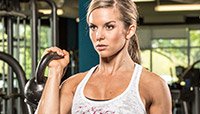
3 Hardcore At-Home Workouts!
Sometimes, the time and space you have for a workout are very limited. When you're in a bind, utilize one of these hardcore no-gym-required workouts! They're quick, intense, and don't require much room.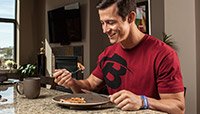
24 Healthy Breakfasts Fit For Athletes
Ever wondered what athletes eat in the morning? Here's what 24 of the fittest people reppin' Bodybuilding.com eat for breakfast.